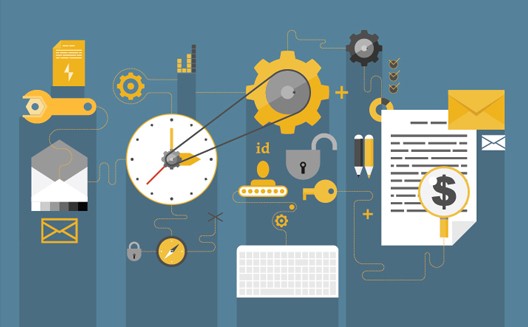Coordinating creative projects without handling the actual execution creates a minefield of miscommunication, inconsistent timelines, and a growing stack of fragmented feedback. These breakdowns leave project leads chasing updates, clarifying vague inputs, and juggling dependencies across contractors who operate on wildly different cadences. As the complexity escalates, what started as a promising project turns into a foggy mess where clarity feels miles away.
But there is a way to bring structure to the storm. With the right systems and workflows, even loosely connected teams can deliver with military precision—without micromanagement or frantic status calls. The secret isn’t in doing more, but in orchestrating smarter. Curious how chaos turns into cohesion when the right tools get involved? Spoiler: sticky notes and “just ping me” Slack messages didn’t make the cut.
ClickUp: Structuring Onboarding with 30-60-90 Day Plans
ClickUp emphasizes the importance of structured onboarding through 30-60-90 day plans. This approach segments the onboarding process into three distinct phases, each with specific goals and activities. By clearly defining objectives for the first 30, 60, and 90 days, project managers can set clear expectations, monitor progress, and ensure new team members integrate seamlessly into projects. This structured methodology enhances accountability and accelerates productivity from the outset.
Asana: Implementing the Waterfall Methodology
Asana supports the waterfall project management methodology, which is ideal for projects with well-defined stages and requirements. This linear approach ensures that each phase is completed before the next begins, reducing the risk of overlapping tasks and miscommunication. For designers managing projects with clear scopes and timelines, the waterfall model provides a structured framework that facilitates meticulous planning and execution.
Trello: Enhancing Visual Organization with List Features
Trello introduces features like list colors and collapsible lists to improve visual organization. Assigning colors to lists allows project managers to categorize tasks based on priority or status, providing immediate visual cues. Collapsible lists help declutter boards, enabling focus on specific project segments. These features enhance clarity and efficiency in managing complex design projects.
Wrike: Centralizing Project Timelines with Calendars
Wrike offers robust calendar features that centralize project timelines, making it easier to schedule tasks, set deadlines, and track progress. By visualizing the entire project timeline, designers can identify potential bottlenecks and allocate resources effectively. This centralized approach ensures that all team members are aligned and aware of project milestones.
Zoho Projects: Integrating Advanced Project Management Features
Zoho Projects introduces Zoho Projects Plus, which integrates advanced features like time tracking, resource utilization, and Gantt charts. These tools provide designers with comprehensive insights into project performance, enabling data-driven decisions. The integration of these features streamlines workflows and enhances overall project efficiency.
Monday.com: Accelerating Development with Velocity Tracking
Monday.com focuses on development velocity, allowing project managers to track the speed at which tasks are completed. By monitoring velocity, designers can identify areas for improvement and adjust workflows to enhance productivity. This focus on performance metrics ensures that projects stay on track and meet deadlines.
Jira: Personalizing Productivity Insights
Jira provides personal productivity insights, helping project managers understand individual and team performance. By analyzing these insights, designers can tailor workflows to suit team strengths and address weaknesses. This personalized approach fosters a more efficient and collaborative project environment.
Basecamp: Simplifying Project Management with Transparent Pricing
Basecamp offers a straightforward pricing model, making it accessible for designers managing multiple projects. Its simplicity in pricing and features ensures that project managers can focus on execution without worrying about hidden costs or complex billing structures. This transparency supports better budgeting and resource allocation.
Smartsheet: Enhancing Efficiency with Automated Workflows
Smartsheet provides automated workflows and real-time updates, enhancing efficiency and accountability in project management. Features like Dynamic View and Control Center help maintain confidentiality and consistency across projects. By integrating finance data, Smartsheet also aids in comprehensive budget management, ensuring projects stay within financial constraints.
Microsoft Project: Streamlining Planning with Recent Updates
Microsoft Project’s recent updates, including enhancements in Microsoft Planner, offer improved planning capabilities. These updates facilitate better task organization, progress tracking, and collaboration, making it easier for designers to manage complex projects effectively. The integration with other Microsoft tools ensures a seamless workflow across different platforms.
TeamWork: Aligning Skills with Project Requirements
TeamWork emphasizes matching the right people with the right skills to project requirements. By ensuring that team members’ skills align with project needs, designers can enhance efficiency and output quality. This strategic alignment reduces the learning curve and accelerates project timelines.
Celoxis: Demonstrating ROI in Project Management
Celoxis focuses on showcasing the return on investment (ROI) in project management software. By providing detailed analytics and performance metrics, designers can assess the effectiveness of their project management strategies. This data-driven approach supports continuous improvement and justifies investments in project management tools.
Miro: Facilitating Agile Visual Management
Miro offers agile visual management tools that support brainstorming, planning, and collaboration. Its visual boards help designers map out project workflows, identify dependencies, and foster team engagement. This visual approach enhances understanding and alignment across all project stakeholders.
Notion: Streamlining Operations for Nonprofits
Notion has proven effective in streamlining operations for nonprofits by centralizing documentation, task management, and collaboration. For designers, Notion’s flexibility allows for customized workflows that adapt to various project needs. This adaptability ensures that all project information is organized and easily accessible.
Conclusion
Effective project management for designers who oversee but don’t execute work relies on tight coordination, sharp visibility, and the discipline to maintain structured workflows. Tools like ClickUp, Asana, Trello, and others offer the foundations—but they’re only part of the solution. True consistency comes from aligning process with affordability, especially when scaling work through freelancers or distributed contributors.
Pinrom brings that alignment with a simple promise: project clarity at just $1 per user.
Start organizing smarter with Pinrom—your full-featured project management system that costs less than your daily coffee.
